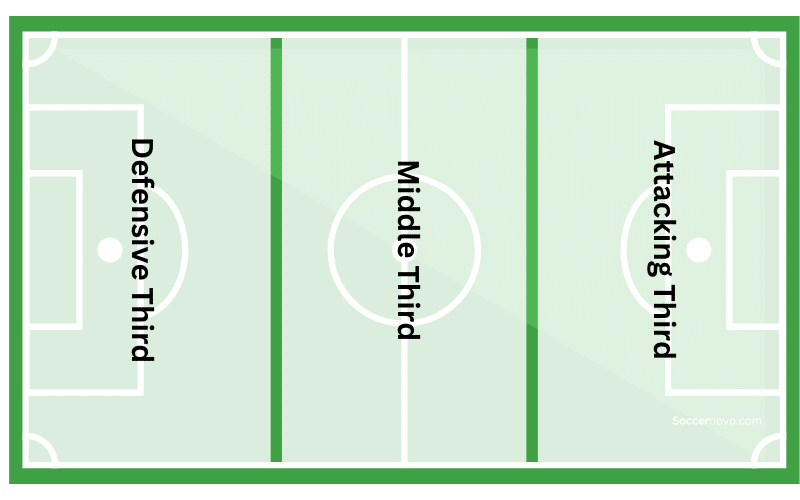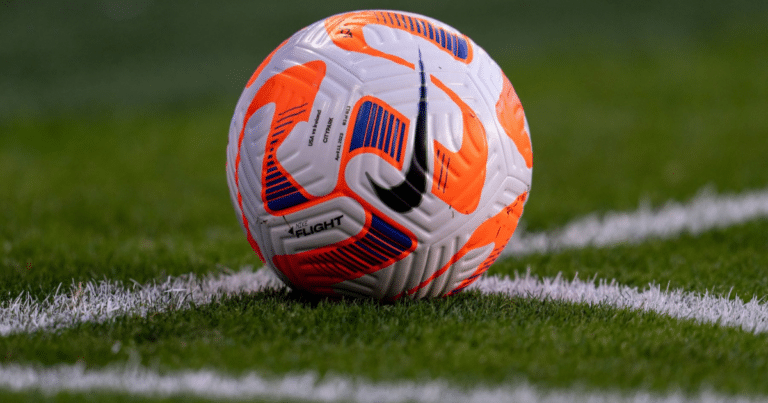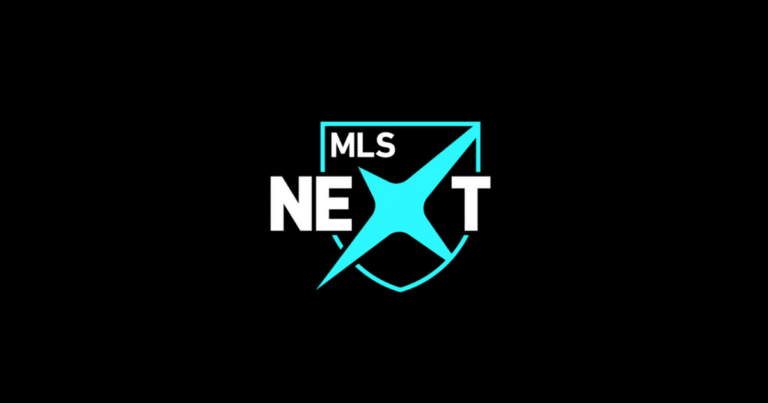Breaking Lines in Soccer

“Breaking lines” in soccer refers to a tactic used by players to advance the ball past the opposition’s defense.
It involves passing the ball through the gaps between defenders to reach a teammate in a more advanced position. Ideally, a player directly heading to the goal.

Effectively breaking the line can be achieved through both short and long passes (think through balls), as well as dribbling.
To break lines, players need to have good ball control and passing skills. They need to be able to quickly move the ball forward and create space for their teammates.
Players also need to be aware of their positioning and the positioning of their teammates and opponents. They need to be able to read the game and anticipate the movements of their opponents.
Let’s break this concept down a little further…
Basics of Breaking Lines in Soccer
A soccer field is broken out in thirds:
- Defensive Third
- Middle Third
- Attacking Third
When breaking a line, players will want to progress from the defensive third to the middle third or the middle third to the attacking third.

Breaking a line is crucial in soccer as it allows teams to create scoring opportunities by bypassing the opposition’s defense rather quickly.
It also helps to create space on the field and disrupt the opposition’s defensive structure. By breaking lines, players can move the ball quickly up the field, catching the opposition off guard and creating chances to score.
To successfully break lines, players must have excellent vision, awareness, and passing accuracy. They must be able to read the game and identify gaps in the opposition’s defense to exploit. It is also essential to have good communication and teamwork to coordinate passes and movements.
Techniques for Breaking Lines in Soccer
Positioning in the thirds
When it comes to breaking lines in soccer, positioning is key. By positioning yourself in the right spot, you can create space and opportunities for your team to advance the ball. Here are a few tips to help you improve your positioning:
- Stay aware of where the defenders are positioned and adjust your position accordingly.
- Look for gaps in the defense and move into them quickly.
- Make diagonal runs to create space and open up passing lanes.
- Use your body to shield the ball from defenders and create space for your teammates.
Passing through the lines
Passing is another important technique for breaking lines in soccer. By making accurate and well-timed passes, you can move the ball past defenders and create scoring opportunities. Here are a few tips to help you improve your passing:
- Keep your passes low and hard to make them more difficult for defenders to intercept.
- Look for players making runs and try to lead them with your passes. Pass into space.
- Use one-touch passing to keep the ball moving quickly and catch the defense off guard.
- Vary the speed and direction of your passes to keep the defense guessing.
Impact of Breaking Lines on Soccer Tactics
By breaking lines, teams can quickly transition from defense to attack, catching the opposition off guard and creating space for their forwards to exploit.
Breaking lines can also be used defensively, with teams pressing high up the field to disrupt the opposition’s passing lanes and force turnovers. This tactic can be particularly effective against teams that rely on possession-based play, as it can disrupt their rhythm and force them to make mistakes.
Overall, breaking lines is a fundamental tactic in soccer that can have a significant impact on a team’s performance. Whether used to create goal-scoring opportunities or disrupt the opposition’s play, it requires skill, strategy, and teamwork to execute successfully!

Written By: SoccerNovo
SoccerNovo is an independent youth soccer media brand built to help parents, players, and coaches better understand the game and the pathways available in U.S. soccer. Our mission is to make youth soccer simpler, clearer, and more accessible for everyone involved in it.
Let’s connect






